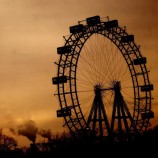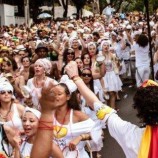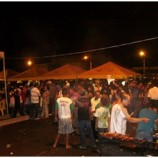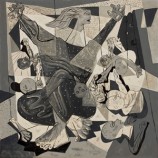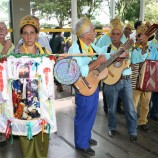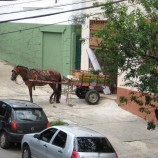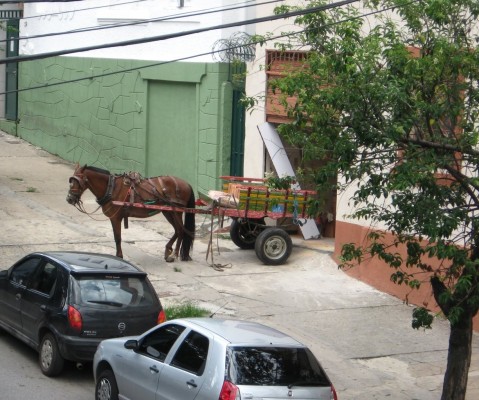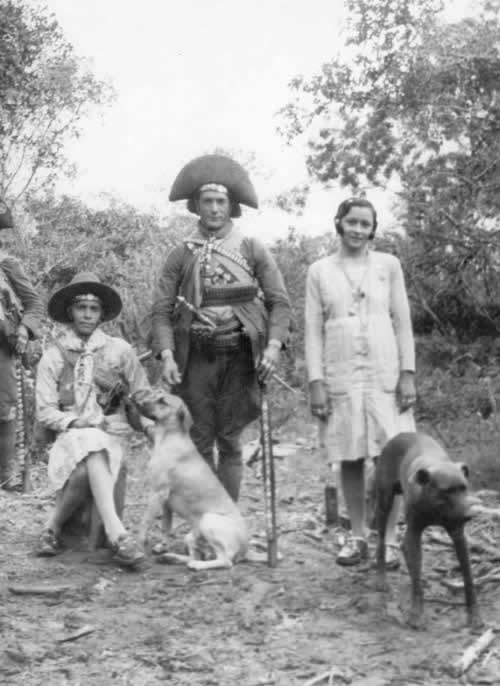
One day, a positively divine book fell into my hands: Cangaceiros by Élise Jasmin.
Caressing its pages, smooth and shiny, I watched the photos emerge, deciphering a little of what life must have been like for the people and their animal companions that the wind blew into the middle of the harsh caatinga (Brazilian savanna).
In one of the photos, amidst the withered and struggling trees, Maria Bonita looks into the camera of photographer Benjamin Abraham, her womanly figure, undoubtedly the most emblematic of the cangaço (highwaymen). An exceptional beauty for her time, and a quality that is sure to have enchanted Lampião.
Famous for her courage and determination, there she is, wearing a dress of city attire instead of the traditional cangaço vestments, hair combed with perfumed lard where two white hair clips are her only adornments—so human in her willingness to reveal herself to the city inhabitants. Staring into the camera, her gaze is sweet and kind.
I attribute the softness in her eyes to being flanked by two dogs whose animality paradoxically humanizes the heavy atmosphere of loaded rifles, dry logs and twisted branches scattered across the ground as they sniff warmth into the air surrounding these two historical personas.
One of the dogs, named Ligeiro (Speedy) is his favorite. With her right hand, a woman in the picture lightly touches his light brown head, with an air of bliss, the canine with two white paws and dark muzzle shows obvious delight in snuggling up to her owner, friend and kind of mother. Back in those boondocks, human children would not be able to keep up with the group.
Maria Bonita’s left hand rests languidly over the black torso of the other dog, Guarani, who turns swiftly towards Lampião at exact the moment of the camera flash. The movement in direction of the king of cartridge belts, daggers and rifles is so independent and real that his head is recorded in the photograph as something imprecise, slightly out of focus. The animal gives us the impression of a perpetual motion exhaustively reproducing the life of that instant; an immortalized lurch.
In the next two sequential shots, I see Corisco’s band, armed to the teeth in obvious pose. Only the dog does not pose. Her naturalness in the foreground contrasts with the almost military lineup of people in the background. In the first picture, she looks at the camera, her white body stained a blackness as black as the mascara around her eyes. In the second shot, she looks at the band as if the presence of the photographer, so distinguished in that desolate and thorny region, were not so important next to her own people.
In another photograph, Corisco is presented in classical stance beside the same dog. This man whose only language seemed to be that of violence has his page in history pacified by virtue of the love of this dog. She knew him as the ringleader, and he called her Dungarees, curiously in view of such a barren place.
Dungarees emerges here as the antithesis of death amid the arid forests, representing the beauty and poetry that dogs provide so well with their companionship, regardless of who we are.


